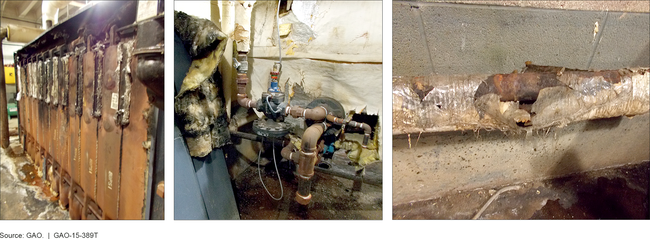Indian Affairs: Preliminary Results Show Continued Challenges to the Oversight and Support of Education Facilities
Highlights
What GAO Found
Information on the physical condition of Bureau of Education (BIE) schools is not complete or accurate as a result of longstanding issues with the quality of data collected by the Department of the Interior's (Interior) Office of the Assistant Secretary-Indian Affairs (Indian Affairs). GAO's preliminary results indicate that issues with the quality of data on school conditions—such as inconsistent data entry by schools and inadequate quality controls—make determining the number of schools in poor condition difficult. These issues impede Indian Affairs' ability to effectively track and address school facility problems. While national information is limited, GAO's ongoing work has found that BIE schools in three states faced a variety of facility-related challenges, including problems with the quality of new construction, limited funding, remote locations, and aging buildings and infrastructure (see figure below).
Aging Boiler Systems at a Bureau of Indian Education School Built in 1959

Note: School and regional Indian Affairs officials considered the school's boilers to be safe, but a BIE safety specialist reported that their condition was a major health and safety concern.
GAO's ongoing work also indicates that several key challenges at Indian Affairs are impeding effective management of school facilities. Specifically, GAO found declines in staffing levels and gaps in technical expertise among facility personnel in Indian Affairs. Further, GAO found that Indian Affairs did not provide consistent oversight of some school construction projects. At a school GAO visited, Indian Affairs managed a $3.5 million project to replace school roofs. Yet the replacement roofs have leaked since they were installed in 2010, causing mold and ceiling damage in classrooms. Indian Affairs has monitored this situation but has not addressed problems with the roofs. Indian Affairs' facility management is also hindered by poor communication with schools and tribes and confusion about whom to contact to address facility problems. Poor communication has led to some school facility needs not being met. For example, school officials submitted a request for funding to address their school's lack of hot water almost a year before GAO visited the school, but Indian Affairs facility officials were unaware of this until notified by GAO. GAO's preliminary results indicate that these persistent challenges diminish Indian Affairs' capability to oversee and support facilities and provide technical assistance to schools. They also run counter to federal internal control standards and leading practices on workforce planning and construction project accountability.
Why GAO Did This Study
BIE oversees 185 elementary and secondary schools that serve approximately 41,000 students on or near Indian reservations in 23 states. In 2014, Interior's Office of the Assistant Secretary-Indian Affairs funded the operations, maintenance, construction, and repair of about 1,785 educational and dormitory buildings, which are worth an estimated $4.2 billion. Recent reports have raised concerns about the physical condition of these facilities and their effect on Indian students' educational outcomes. Several studies indicate that better school facilities are associated with better student outcomes.
This testimony reports on ongoing GAO work related to the conditions of BIE schools. A full report will be issued later this year. Based on GAO's preliminary findings, this testimony focuses on: (1) what is known about the conditions of selected BIE schools and (2) the extent to which Indian Affairs effectively oversees and supports BIE school facilities.
For this work, GAO is reviewing agency data and documentation, and relevant federal laws and regulations; interviewing agency officials; and has conducted site visits to schools in three states, which were selected based on their geographic diversity and other factors.
For more information, contact Melissa Emrey-Arras at (617) 788-0534 or emreyarrasm@gao.gov.
